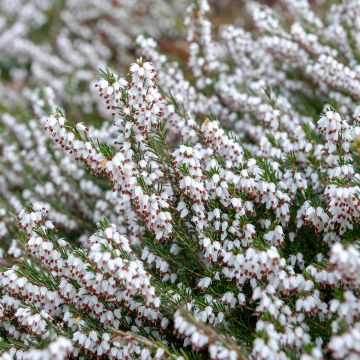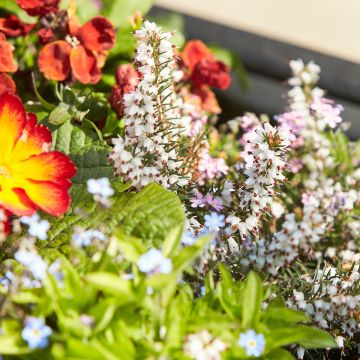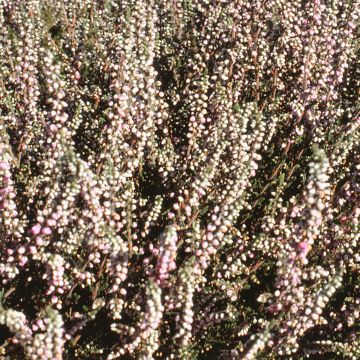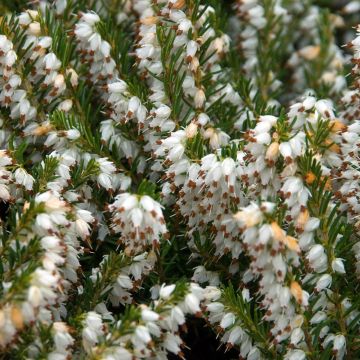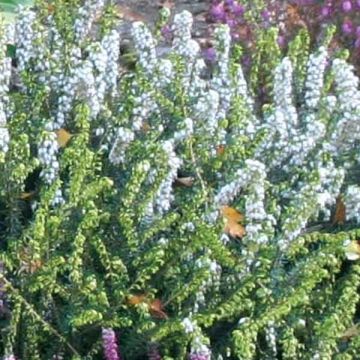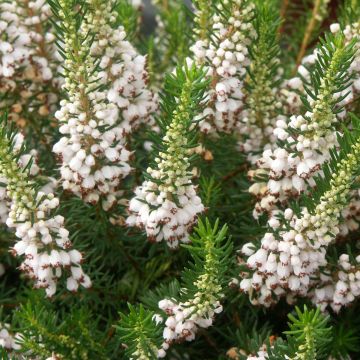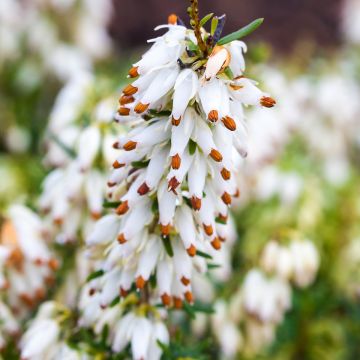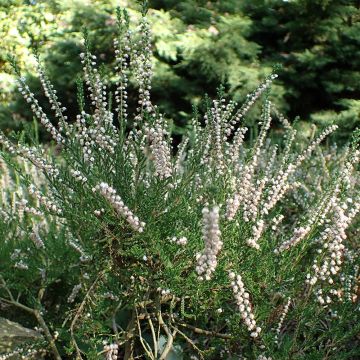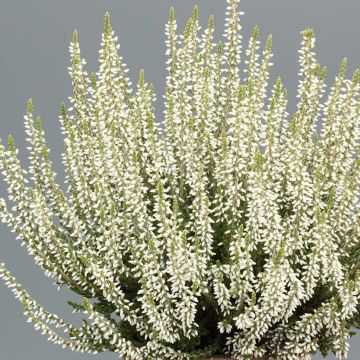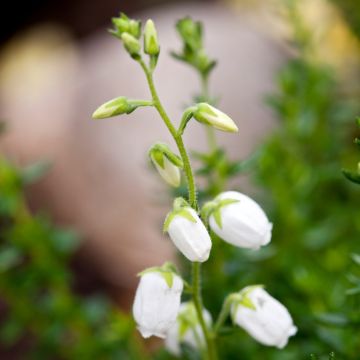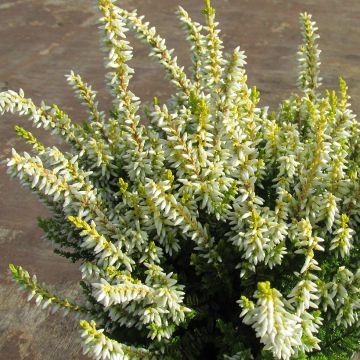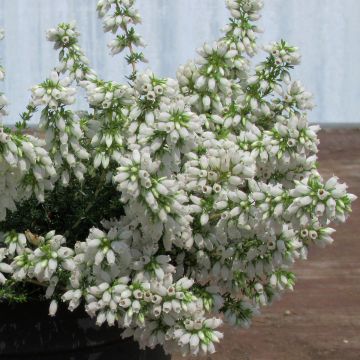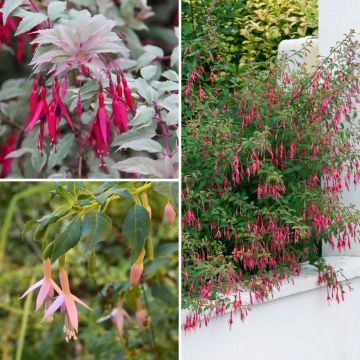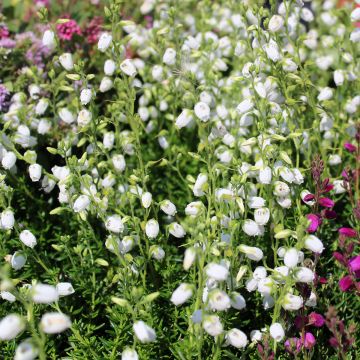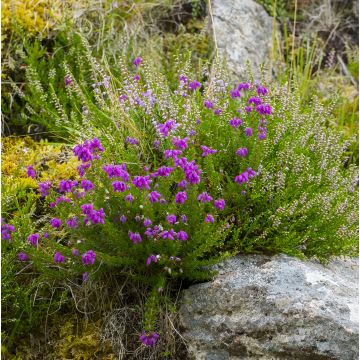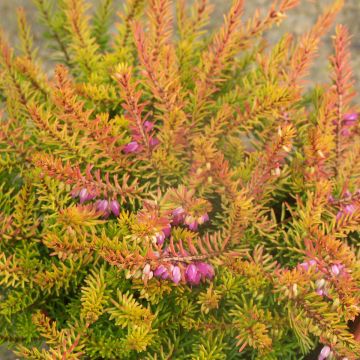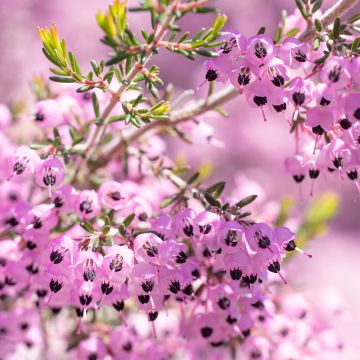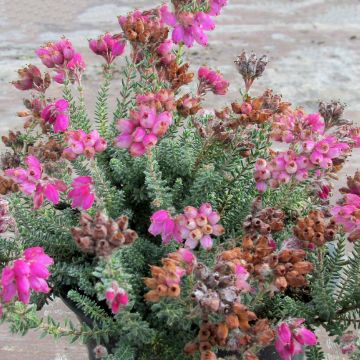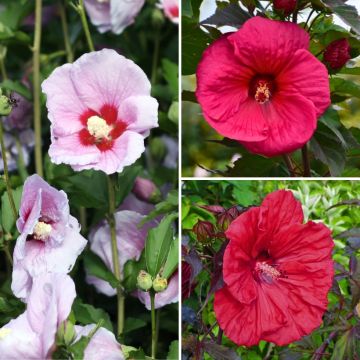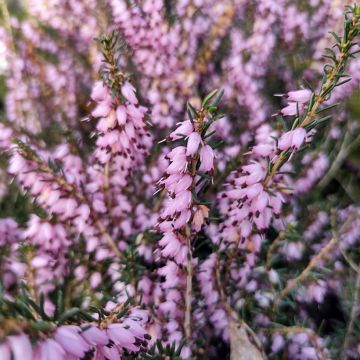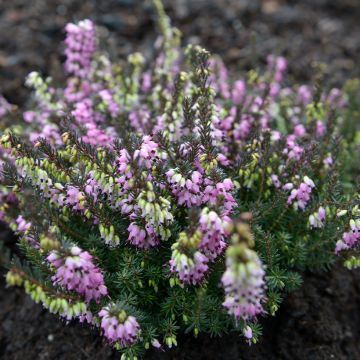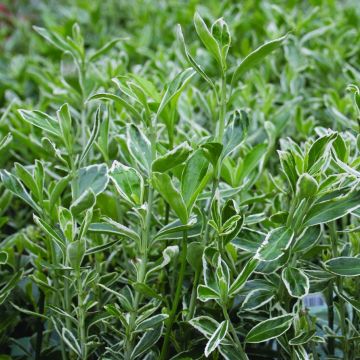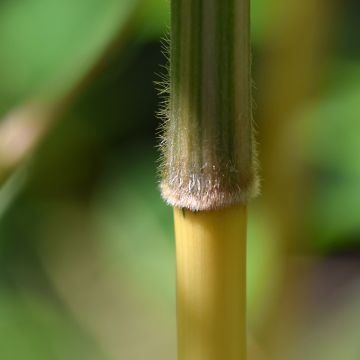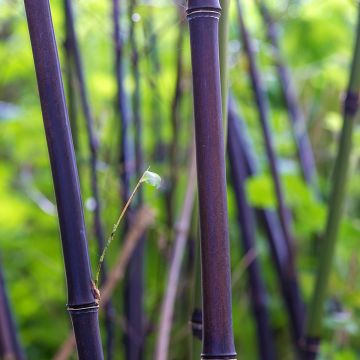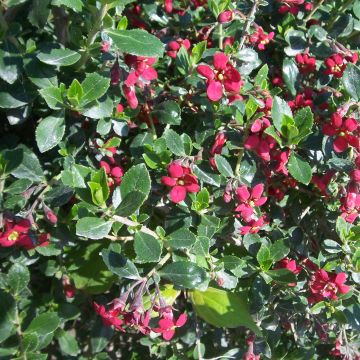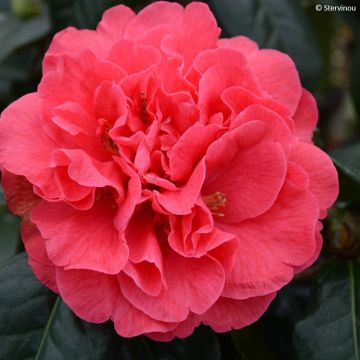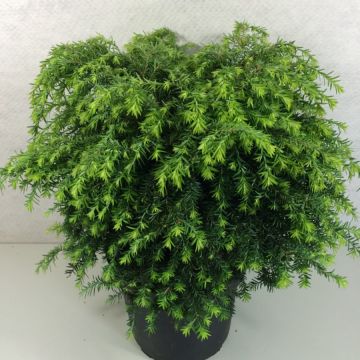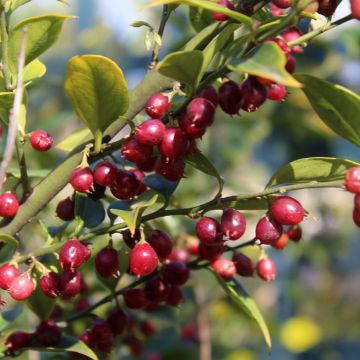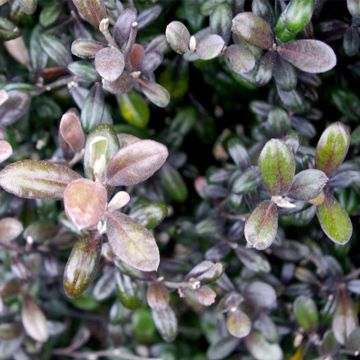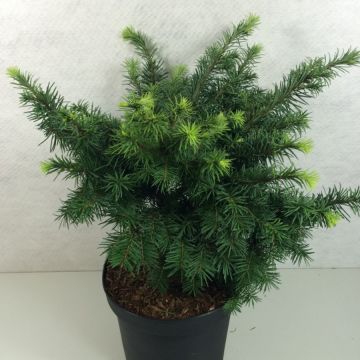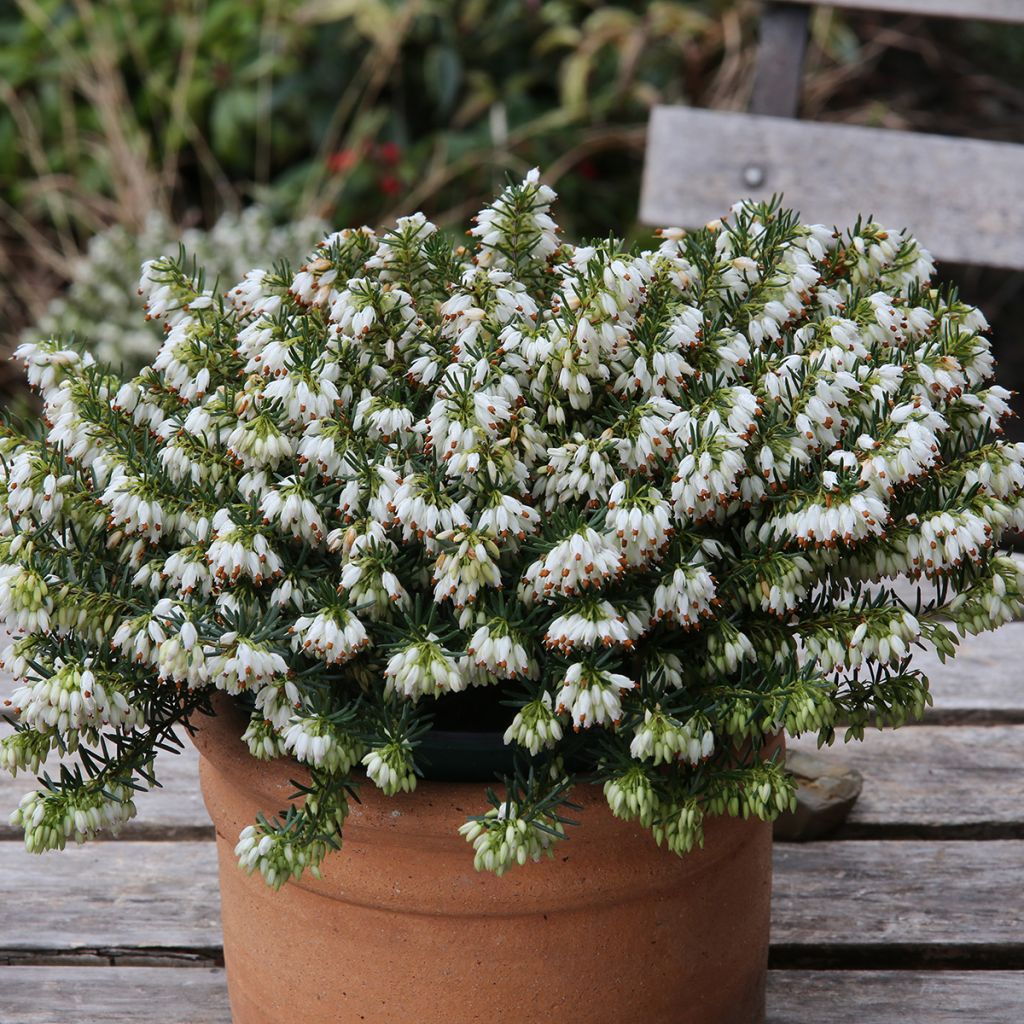

Erica carnea f. alba Schneekuppe - Winter Heath
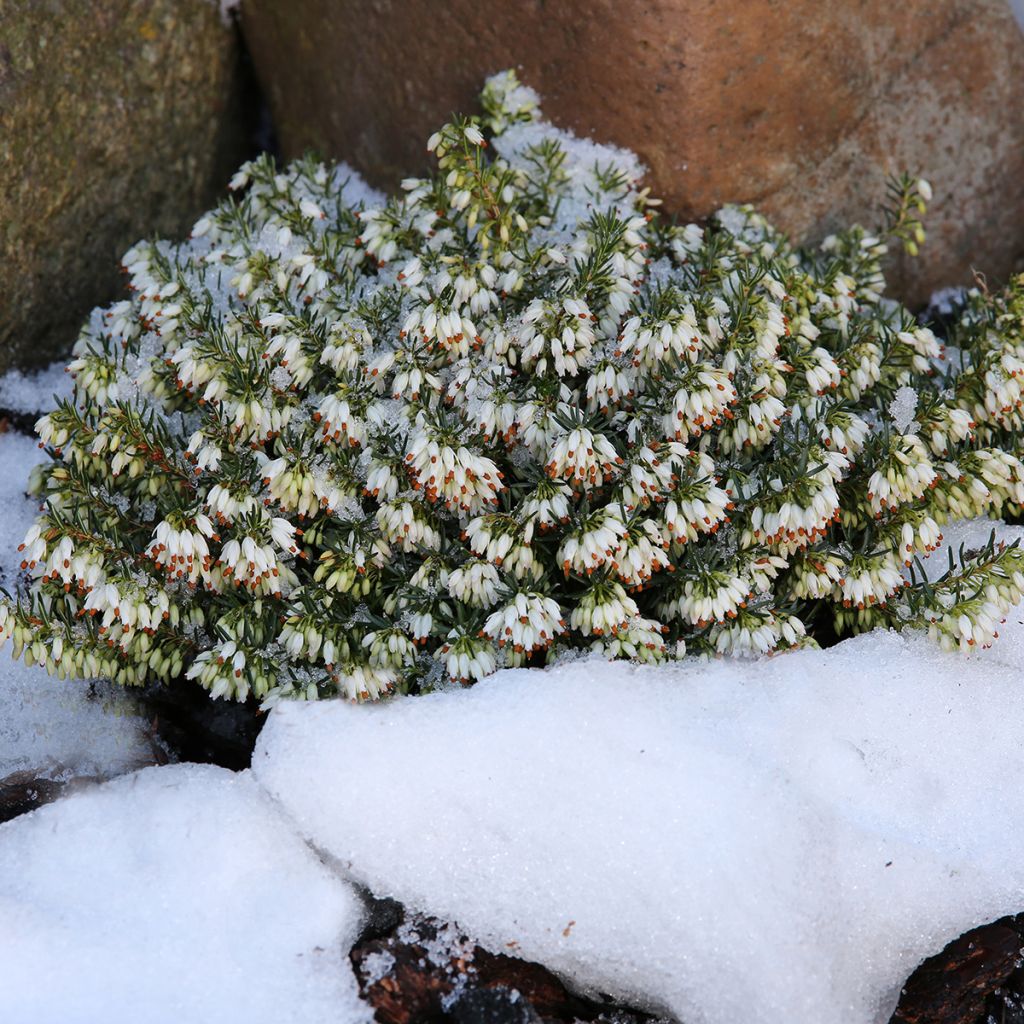

Erica carnea f. alba Schneekuppe - Winter Heath
Erica carnea f. alba Schneekuppe - Winter Heath
Erica carnea Schneekuppe
Winter Heath, Spring Heath, Snow Heather, Alpine Heath
Why not try an alternative variety in stock?
View all →This plant carries a 24 months recovery warranty
More information
We guarantee the quality of our plants for a full growing cycle, and will replace at our expense any plant that fails to recover under normal climatic and planting conditions.
From €5.90 for pickup delivery and €6.90 for home delivery
Express home delivery from €8.90.
Does this plant fit my garden?
Set up your Plantfit profile →
Description
Erica carnea f. alba 'Schneekuppe' is a selection of Alpine Heather or Snow Heather that is characterized by particularly compact vegetation, a generous pure white flowering, and very bright cream-coloured young shoots. Covered with flowers throughout winter until the beginning of spring, this small, neatly shaped plant is decorative all year round, even when not in bloom. This heather is easy to grow, withstands heavy frost and tolerates slightly chalky soils. Ideal for rock gardens, in planters, or as ground cover between shrubs.
Erica carnea 'Schneekuppe' was selected in Germany by Kurt Kramer and is the result of cross-breeding between the varieties 'Snowqueen' and 'Springwood White'. Like all heathers, this variety belongs to the Ericaceae family. It is one of many descendants of the Erica carnea native to the limestone Alps. The 'Schneekuppe' heather is a small, compact, round and flat undershrub which does not exceed 15 cm (6in) high and 30 cm (12in) wide. Its growth is slow, and it lives around fifteen years. In winter until spring, from January to March-April, it produces lots of small pure white urn-shaped flowers in clusters 5 to 10 cm (2 to 4in) long at the ends of the leafy stems. The flowering is nectar-rich and provides a valuable source of pollen and nectar for bumblebees, hoverflies, and other bees in early spring. The foliage is evergreen and consists of very narrow and upright small, vibrant green leaves. The young spring shoots are very light in colour.
Erica carnea 'Schneekuppe' is a gem for rock gardens. It can also be planted en masse, as ground cover at the base of deciduous or evergreen shrubs in the light shade that it likes. This mountain heather naturally blends with other alpine perennials. Among the Bergenias and Sedums, there are precious and non-invasive varieties that will go well with alpine heathers. For example, Bergenia 'Dragonfly Angel Kiss' and Sedum 'Dragon Blood'. You can create a heather garden with a mosaic of colours, in flowerbeds, and pots.
While heathers are often associated with the wet Atlantic heathlands of Brittany, Ireland, or Scotland, some heathers thrive in dry climates and on limestone soils like the Mediterranean. However, one of the richest areas for heather is in South Africa. In the Cape region, there is a plant formation on acidic soil called Fynbos, which includes nearly 625 heather species out of the 740 that are listed worldwide.
Report an error about the product description
Erica carnea f. alba Schneekuppe - Winter Heath in pictures


Plant habit
Flowering
Foliage
Botanical data
Erica
carnea
Schneekuppe
Ericaceae
Winter Heath, Spring Heath, Snow Heather, Alpine Heath
Cultivar or hybrid
Other Heather
Planting and care
Erica carnea 'Schneekuppe' prefers soil which is poor in organic matter and adapts very well to lean, sandy and humus-bearing, moist, well-drained soil. Lime is tolerated if the soil is enriched with humus or compost. Plant without burying the collar, in groups of 5 to 10 for an intense effect. This plant likes non-scorching sun or partial shade. Carefully weed around the base during the first two years. Adapted to very well-drained environments, the roots of this heather are branched and prevent the establishment of other species nearby, once they are well established. In prolonged drought, mulch the base to maintain some moisture. Erica can be susceptible to phytophthora (root rot), pythium and rhizoctonia during hot and humid periods.
Planting period
Intended location
Care
This item has not been reviewed yet - be the first to leave a review about it.
Evergreen shrubs
Haven't found what you were looking for?
Hardiness is the lowest winter temperature a plant can endure without suffering serious damage or even dying. However, hardiness is affected by location (a sheltered area, such as a patio), protection (winter cover) and soil type (hardiness is improved by well-drained soil).

Photo Sharing Terms & Conditions
In order to encourage gardeners to interact and share their experiences, Promesse de fleurs offers various media enabling content to be uploaded onto its Site - in particular via the ‘Photo sharing’ module.
The User agrees to refrain from:
- Posting any content that is illegal, prejudicial, insulting, racist, inciteful to hatred, revisionist, contrary to public decency, that infringes on privacy or on the privacy rights of third parties, in particular the publicity rights of persons and goods, intellectual property rights, or the right to privacy.
- Submitting content on behalf of a third party;
- Impersonate the identity of a third party and/or publish any personal information about a third party;
In general, the User undertakes to refrain from any unethical behaviour.
All Content (in particular text, comments, files, images, photos, videos, creative works, etc.), which may be subject to property or intellectual property rights, image or other private rights, shall remain the property of the User, subject to the limited rights granted by the terms of the licence granted by Promesse de fleurs as stated below. Users are at liberty to publish or not to publish such Content on the Site, notably via the ‘Photo Sharing’ facility, and accept that this Content shall be made public and freely accessible, notably on the Internet.
Users further acknowledge, undertake to have ,and guarantee that they hold all necessary rights and permissions to publish such material on the Site, in particular with regard to the legislation in force pertaining to any privacy, property, intellectual property, image, or contractual rights, or rights of any other nature. By publishing such Content on the Site, Users acknowledge accepting full liability as publishers of the Content within the meaning of the law, and grant Promesse de fleurs, free of charge, an inclusive, worldwide licence for the said Content for the entire duration of its publication, including all reproduction, representation, up/downloading, displaying, performing, transmission, and storage rights.
Users also grant permission for their name to be linked to the Content and accept that this link may not always be made available.
By engaging in posting material, Users consent to their Content becoming automatically accessible on the Internet, in particular on other sites and/or blogs and/or web pages of the Promesse de fleurs site, including in particular social pages and the Promesse de fleurs catalogue.
Users may secure the removal of entrusted content free of charge by issuing a simple request via our contact form.
The flowering period indicated on our website applies to countries and regions located in USDA zone 8 (France, the United Kingdom, Ireland, the Netherlands, etc.)
It will vary according to where you live:
- In zones 9 to 10 (Italy, Spain, Greece, etc.), flowering will occur about 2 to 4 weeks earlier.
- In zones 6 to 7 (Germany, Poland, Slovenia, and lower mountainous regions), flowering will be delayed by 2 to 3 weeks.
- In zone 5 (Central Europe, Scandinavia), blooming will be delayed by 3 to 5 weeks.
In temperate climates, pruning of spring-flowering shrubs (forsythia, spireas, etc.) should be done just after flowering.
Pruning of summer-flowering shrubs (Indian Lilac, Perovskia, etc.) can be done in winter or spring.
In cold regions as well as with frost-sensitive plants, avoid pruning too early when severe frosts may still occur.
The planting period indicated on our website applies to countries and regions located in USDA zone 8 (France, United Kingdom, Ireland, Netherlands).
It will vary according to where you live:
- In Mediterranean zones (Marseille, Madrid, Milan, etc.), autumn and winter are the best planting periods.
- In continental zones (Strasbourg, Munich, Vienna, etc.), delay planting by 2 to 3 weeks in spring and bring it forward by 2 to 4 weeks in autumn.
- In mountainous regions (the Alps, Pyrenees, Carpathians, etc.), it is best to plant in late spring (May-June) or late summer (August-September).
The harvesting period indicated on our website applies to countries and regions in USDA zone 8 (France, England, Ireland, the Netherlands).
In colder areas (Scandinavia, Poland, Austria...) fruit and vegetable harvests are likely to be delayed by 3-4 weeks.
In warmer areas (Italy, Spain, Greece, etc.), harvesting will probably take place earlier, depending on weather conditions.
The sowing periods indicated on our website apply to countries and regions within USDA Zone 8 (France, UK, Ireland, Netherlands).
In colder areas (Scandinavia, Poland, Austria...), delay any outdoor sowing by 3-4 weeks, or sow under glass.
In warmer climes (Italy, Spain, Greece, etc.), bring outdoor sowing forward by a few weeks.


































